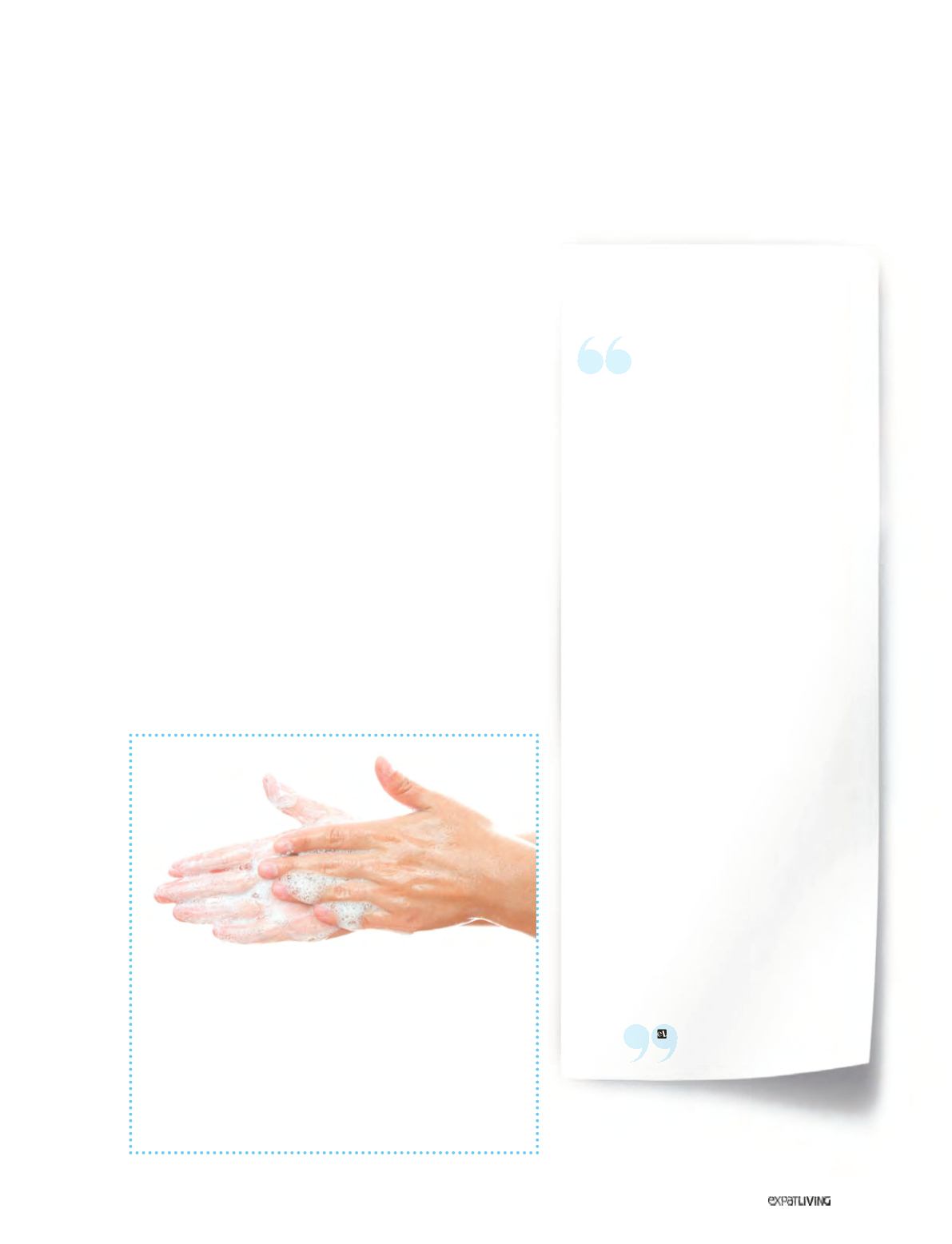

MYCOPLASMA
311
November14
While there’s no vaccine to prevent mycoplasma, there are
simple measures that can be taken to reduce your chances
of contracting it.
• Cover your mouth and nose with tissues when sneezing and
coughing – and throw them away after use!
• Wash your hands frequently – good hand hygiene can go a
long way in reducing the risk of transmission.
• Consult your doctor as soon as you suspect you have
mycoplasma – this will help keep it from spreading further.
What are the symptoms?
Symptoms usually develop two to three weeks after exposure to the
organism, and progress slowly over a period of two to four days. Initial
symptoms typically include fever, sore throat, fatigue, aching muscles
and dizzy spells; a dry cough, often in spasms, is the hallmark of the
infection. Early stages of the illness can be very similar to those of the
common cold or even influenza, but can be persistent and linger for
weeks, especially the cough and tiredness.
Most cases are diagnosed by clinical history on the basis of typical
symptoms. A blood test is sometimes done, ideally a week after the
onset of symptoms.
What are the risk factors?
Anyone can get the illness, but it most often affects older children
and young adults. People at highest risk for mycoplasma pneumonia
include those living or working in crowded areas such as schools and
shelters for the homeless, although many people who contract it have
no identifiable risk factor.
How’s it treated and what’s the recovery time?
As it is a self-limiting infection, treatment is usually not necessary; in
more serious cases, antibiotics can be effective. Most people recover
completely, even without antibiotics, although antibiotics may speed
up the recovery process. In untreated children and adults, coughing
and weakness can persist for up to a month. The disease can be more
serious in elderly patients and those with a weakened immune system.
An Expat’s Account
EL
’S VERY OWN RACHAEL WHEELER SHARES HER
FIRST-HAND EXPERIENCE OF MYCOPLASMA.
When a cold (well, what I thought was a cold)
refused to leave me alone after about two
weeks, a few ladies in the office asked if I had
mycoplasma. ‘A who?’ I thought. ‘What is that,
some sort of worm situation?’ ‘Nah, it’s just a
bad cold.’ Another week later and my cough
was hitting ‘90-year-old-man-who-smokes-40-
a-day’ levels. It was a thousand-fold worse
by night; as soon as my head hit that pillow,
countless tiny feathers started dancing their
way up and down my throat.
So, off I trotted to the doctor. The verdict?
Mycoplasma. The doctor tried to give me
lozenges, syrup, throat relaxants, sleeping
tablets and antibiotics, which came to about
$200. I took the antibiotics and syrup, and
ran. Well, slow-walked – running is out when
you have the equivalent lung function of a
dying mouse.
To be honest, it was pretty bad for another
four weeks or so, particularly at night. It’s not
completely disabling – mine wasn’t, anyway –
but the lack of sleep, deep cough and inability
to exercise (I tried a short run and found myself
doubled-over and dry heaving about 80 metres
down the road) start to get seriously annoying.
And, I should admit, I passed the infection on
to three others because I didn’t rest or wait
long enough before attempting to get back
to normal life.
The infection didn’t just vanish on the drugs;
I took three courses of antibiotics (and caved
into taking sleeping tablets) before the cough
finally faded away, allowing me to sleep in
peace. (My other half had a few nights in
the spare room during the worst coughing
stage.) It still affected my running for another
couple of weeks after that, but it drifted away
eventually.
International Paediatric Clinic
1 Orchard Boulevard, #11-06 Camden Medical Centre
6887 4440 | imc-healthcare.com



















